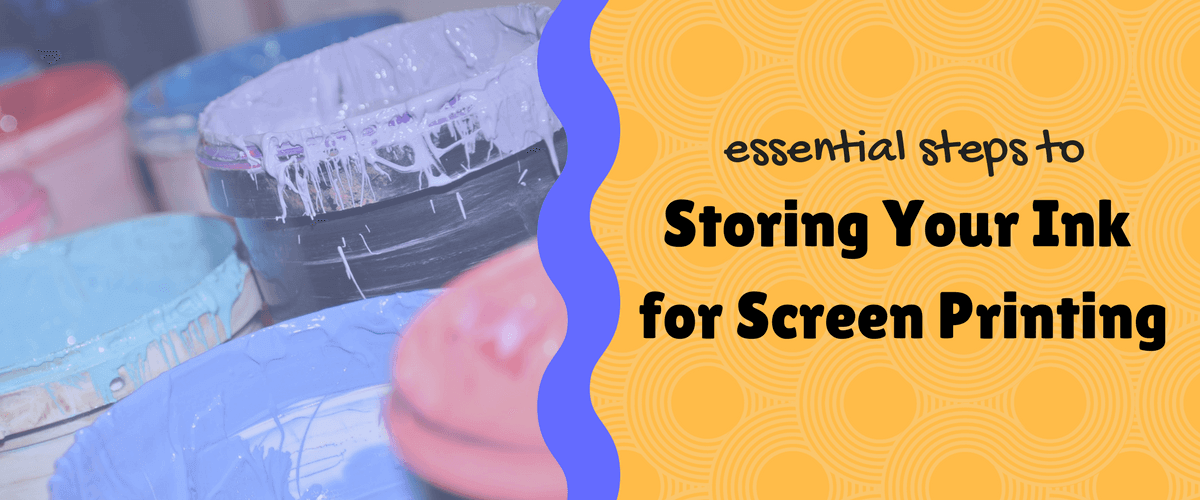

Революция в индустрии трафаретной печати благодаря передовым технологиям и качественному обслуживанию
Anatol Equipment Manufacturing Co.
1429 S Shields Dr
Waukegan, IL 60085


Революция в индустрии трафаретной печати благодаря передовым технологиям и качественному обслуживанию
Anatol Equipment Manufacturing Co.
1429 S Shields Dr
Waukegan, IL 60085

Make the most out of your ink supply by learning some tips for extending its shelf life. Improper ink storage can break down and spoil your inks, which can cost your shop money and time. When looking for the right place to store your ink, there are several considerations to keep in mind.
Screen printing inks must be stored at the proper temperature, generally between 65 and 90 degrees Fahrenheit. Remember: Heat cures ink. That means if your ink gets too hot, it can begin to gel in the bucket and develop an unusable consistency. On the flip side, water-based ink can freeze or lose the proper consistency if the storage temperature is too cold.
Even if your shop generally stays within the 65 to 90 degree range, remember that there are other factors that can affect the temperature of your ink. If your ink is stored on the top shelf of a storage space that isn’t temperature controlled, the ink could easily be exposed to temperatures above 90 degrees on a hot summer day. Water-based ink placed in a basement or uninsulated storage space during the winter could easily freeze. Remember to double check your ink storage space during extreme hot or cold spells to make sure a safe storage temperature has been maintained.
The heat from the sun also can cure your ink. Even if your ink is stored in a temperature-controlled room, the sun’s rays can cause the ink to partially cure and develop an odd texture. Make sure ink is stored away from windows. Also, be aware of how the sun hits you shop and your storage spaces. It’s not a good idea to store ink along a wall that is exposed to a lot of afternoon sunlight during the summer, as that can affect the temperature of the wall and the nearby ink. When buckets of ink are taken out for production, be sure that they aren’t placed in a sunny patch near a window or door.
It can be tempting to leave a stir stick or scoop in your ink bucket, especially if you plan to re-use the ink later in the day, or even within the next few days. Storing the ink with a stir stick or scoop, particularly if it’s a wooden or cardboard scoop, can affect the texture and function of the ink. Any absorbent material left in the ink bucket will take in the plasticizer from the ink, disturbing the ratio of the plasticizer to the ink.

Anatol’s Formulator ink mixer takes the work out of
preparing your ink — giving you thorough, consistent results.
Proper ink storage doesn’t just take place on a shelf or in a storage closet; you also have to be mindful of how your ink is being stored while it’s in use on the production floor. Always put lids back on buckets of ink, as the lint floating around the shop can enter and contaminate the ink. Never place your ink near your conveyor dryer or on top of your flash cure unit, as this can raise the temperature of your ink and potentially cause partial curing. Placing ink buckets on a cold concrete floor also can affect the ink’s viscosity. Always stir ink thoroughly before you use it to make sure any irregularities in the texture are smoothed out. And if you plan to save unused ink from your screens, use a separate container and use the ink only for emergencies; returning it to the bucket can contaminate the entire bucket of ink and cause it to spoil.
By putting care into how you are storing your ink — and checking in on your ink storage conditions now and again — you can help to preserve your ink and save your shop money. When ink spoils and you have to throw it away, you are throwing away some of your shop’s profit margin!
Want some more tips on how to organize your shop? Keep an eye on the Anatol blog for ideas on how to get the most out of your work space — or give us a call and we can discuss the right equipment for optimizing your shop layout!
Your message was successfully sent!